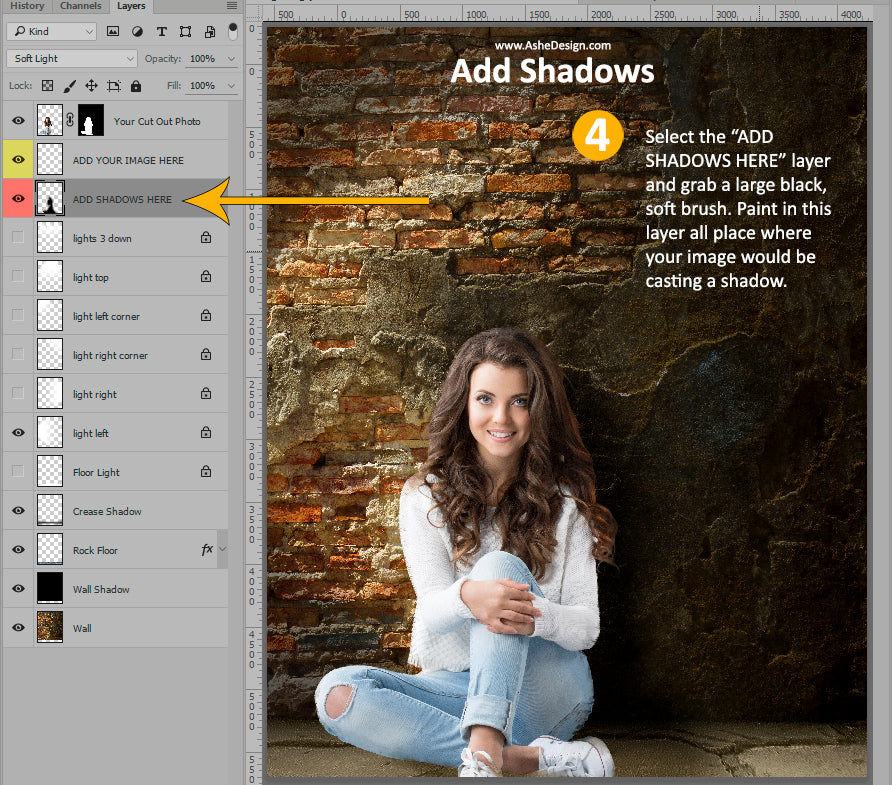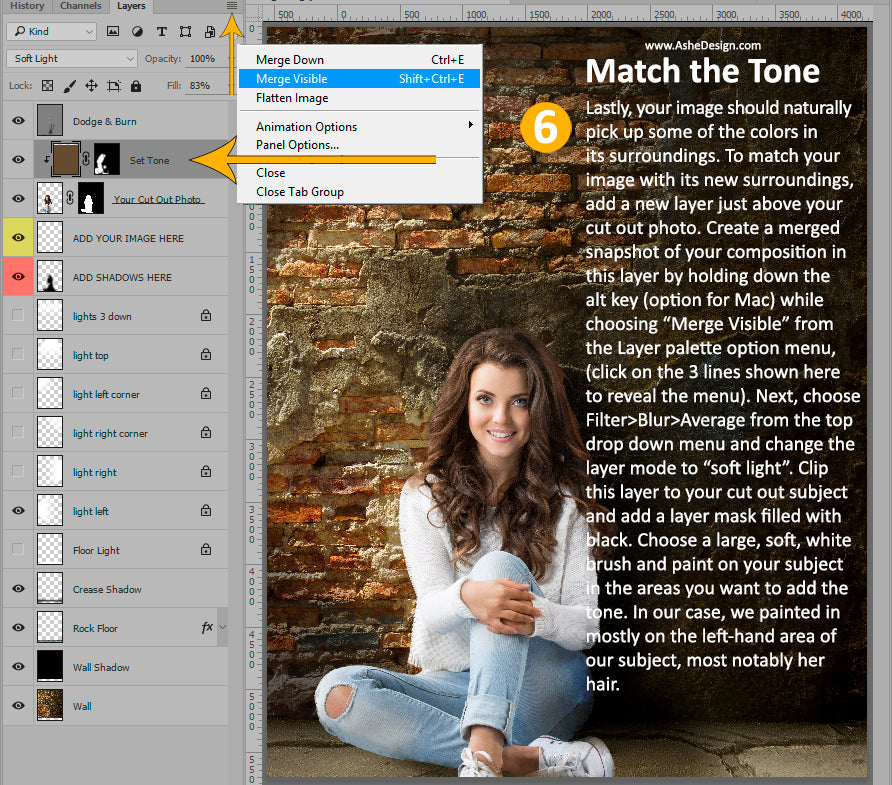Adding your images to our digital backdrops is a snap with this easy-to-follow tutorial for Photoshop and Photoshop Elements users. The most important part is getting a good extraction of your image from its original background. While there are many ways to do this, we've found that nothing compares to Topaz Remask. View the video tutorial link below to see it in action.
Links for masking tutorials: http://bit.ly/Topaz-Remask http://bit.ly/Masking123
2. In this tutorial, we are using one of the digital backdrops from our Brick Grunge set.

3. Your composition will start to shape up nicely when you light the background. We've ordered the lights beneath the cut out image layer in the layer palette to ensure only the background gets lit. These lights are repositionable, so you can move them to suit your image if needed. You can also adjust the intensity of the lights by changing the layer opacity. We've only turned on one light here, but you can turn on multiple lights if your subject calls for it. It's fun to experiment with different light combinations.
4. Adding shadows is one of the most important steps to creating a realistic composition. In this example, we painted heavily on the wall and floor on the right hand side since the light coming from the left would cast a shadow in this manner. You can adjust the intensity of the shadow layer by changing the amount of layer opacity.
5. Dodging and burning helps make your composition more convincing by wrapping shadows and light around your subject. To fill your layer with 50% gray choose Edit>Fill from the top drop down menu then select 50% gray from the contents drop down menu. Start by selecting your burn brush to darken areas of your cut out image.








